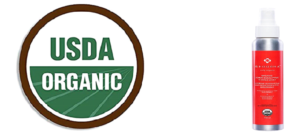Questions:
- Can a product be called organic regardless of the percentage or concentration of organic products?
- What is an organic ingredient?
- What is the organic percentage of an organic ingredient?
- Are organic cosmetics regulated by the government?
- Are there any private regulations available to certify organic cosmetic products?
- What are the best private policies to adopt?
- What ingredients are allowed or not allowed, and in what concentration?
- How are organic precuts created?
Organic Cosmetic Standards Worldwide
- Currently, there are many labels on the market claiming to be organic. This makes it difficult for consumers to determine which ones are superior as well as understanding the basic concepts on the labels.
- It has been estimated that over 40 private standards exists worldwide. Out of these 40 private standards, approximately 25 are being used by the majority, with two being the most popular. Two of the mostly used standards with the EU are generally freely available and accessible to the public.

USDA/NOP Organic
Cosmetics, Body Care Products and Personal Care Products
FDA and Health Canada do not define or regulate the term “organic” as it applies to cosmetics, body care, or personal care products.
USDA regulates the term “organic” as it relates to agricultural products through its National Organic Program (NOP) regulation, 7CFR § 205/
If a cosmetic, body care product, or personal care product contains or is made up of agricultural ingredients, and can meet USDA/NOP organic production, handling, processing and labeling standards, it may be eligible for certification under NOP regulations.
The producers of the organic agricultural ingredients, the ingredient handlers, as well as the manufacturer of the final product must all be certified by a USDA accredited agent.
Once certified, these products are eligible for the same four organic labeling categories as all other agricultural products. These labeling categories are
100 % Organic
- Product must contain only organically produced ingredients (excluding water and salt)
- Product may display the USDA Organic Seal and must display the certifying agent’s name and address
Organic
- Product must contain at least 95% organically produced ingredients (excluding water and salt)
- Remaining product ingredients must consist of non-agricultural substances approved on the national list or non-organically produced agricultural products that are not commercially available in organic form, which also appear on the national lost.
- Product may display the USDA Organic Seal and must display the certifying agent’s name and address
Made with Organic Ingredients
- Product contains at least 70% organically produced ingredients
- Product label may list up to three organic ingredients or “food” groups on the principal display panel. For example, body lotion made with at least 70% organic ingredients (excluding water and salt) and only organic herbs may be labeled as “body lotion made with organic lavender, rosemary and chamomile,” or “body lotion made with organic herbs.”
- Product may not display the USDA Organic Seal and must display the certifying agent’s name and address
Non-Organic
- Product contains less than 70% organic ingredients
- Product cannot use the term organic anywhere on the principal display panel.
- They may however, identify USDA certified ingredients on the ingredients statement on the information panel.
- Product may not display the USDA Organic Seal and may not display a certifying agent’s name and address
Any cosmetic, body care product, or personal care product that does not meet the production, handling, processing, labeling and certification standards described above, may not state, imply or convey in any way that the product is USDA-certified organic or meets the USDA organic standards.
Examples of Products that are USDA certified:



Recent Comments